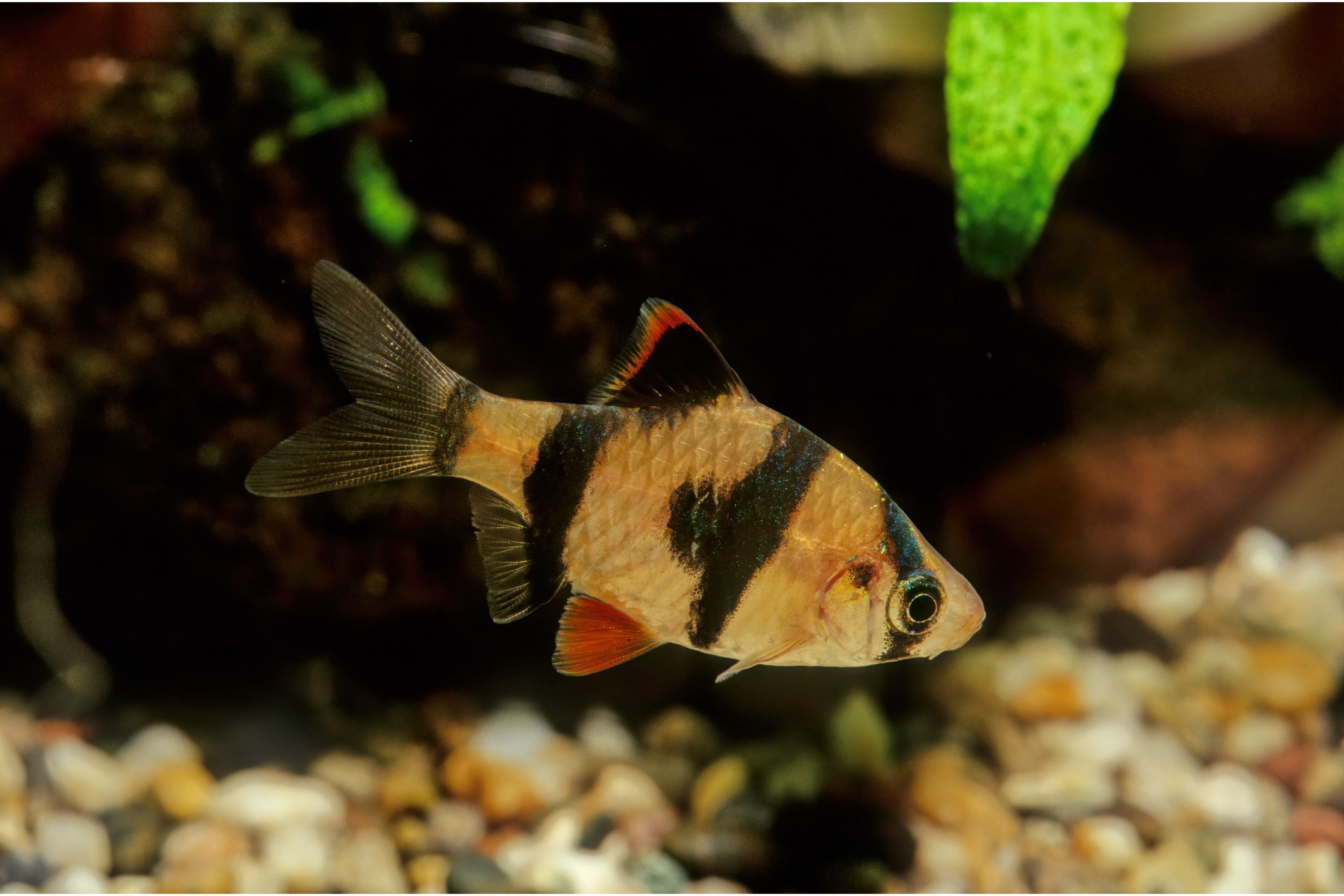Tiger barb
(Puntigrus tetrazona)

Description
The tiger barb or Sumatra barb (Puntigrus tetrazona), is a species of tropical cyprinid fish. The natural geographic range reportedly extends throughout the Malay Peninsula, Sumatra and Borneo in Indonesia, with unsubstantiated sightings reported in Cambodia.Tiger barbs are also found in many other parts of Asia, and with little reliable collection data over long periods of time, definite conclusions about their natural geographic range versus established introductions are difficult. Tiger barbs may sometimes be confused with Puntigrus anchisporus, which are similar in appearance. Tiger barbs have been reported to be found in clear or turbid shallow waters of moderately flowing streams. They live in Indonesia, Borneo, tropical climates and prefer water with a 6.0–8.0 pH, a water hardness of 5–19 dGH, and a temperature range of 77 - 82 °F or 25 - 27.8 °C. Their discovery in swamp lakes subject to great changes in water level suggests a wide tolerance to water quality fluctuations. Their average lifespan is seven years. The tiger barb, an active shoaling fish, is usually kept in groups of six or more. They are often aggressive in numbers less than five, and are known fin nippers. Semi aggressive fish form a pecking order in the pack which they may extend to other fish, giving them a reputation for nipping at the fins of other fish, especially if they are wounded or injured. They are thus not recommended for tanks with slower, more peaceful fishes such as bettas, gouramis, angelfish and others with long, flowing fins. They do, however, work well with many fast-moving fish such as danios, platys and most catfish. When in large enough groups, however, they tend to spend most of their time chasing each other and leave other species of fish alone. They dwell primarily at the water's mid-level. One of the best tankmates for the tiger barb provided there is considerable space is the clown loach, which will school with the tiger barbs and act as they do, and the tigers act as the loaches do. Tiger barbs do best in soft, slightly acidic water. The tank should be well lit with ample vegetation, about two-thirds of the tank space. These barbs are omnivorous, and will consume processed foods such as flakes and crisps, as well as live foods. They are relatively greedy with their food consumption and can become aggressive during feeding time. Tiger barbs seem more susceptible than other species to cottonmouth (columnaris), a bacterial infection.
Taxonomic tree:







